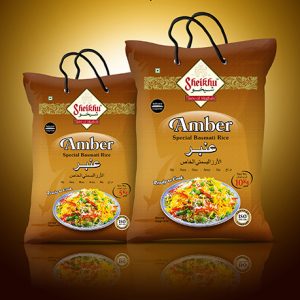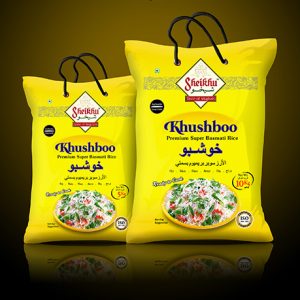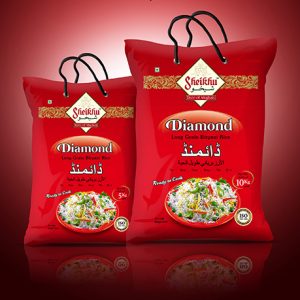Rice Varieties
Rice Varieties
Showing all 7 results
-
D 98 Basmati variety of rice mainly produced in the regions of Sindh. It is similar to the PK 385 of Punjab
rice AND mainly exported to regions in the Middle East. -
With the recent advancement in international research, another rice grain has been developed with the
name of 1121 (which is the name of the seed of the grain). This variety of rice also comes under the
Basmati range, however, it is better in cooking as compared to traditional basmati. Yet, it lacks the
fragrance of the basmati rice. The grains of the 1121 Basmati are very long and are known for its
exclusive taste. The 1121 Basmati is considered to be the premium quality rice and has an expensive
price range. -
D 98 Basmati variety of rice mainly produced in the regions of Sindh. It is similar to the PK 385 of Punjab
rice AND mainly exported to regions in the Middle East. -
IRRI-6 is the low priced, high volume rice. This variety is grown in the lower part of Sindh in Pakistan and
plays a major role in bringing export revenue for the country. The institute of International Rice
Research (IRR) has also evolved this variety. It is classified as medium grain rice with a length of 5.70mm
to 6.80mm. Thickness is present in grains of rice. The IRRI-6 is mostly exported to African countries and
to a few regions in the Middle East. Another variety of the IRRI-6 rice is parboiled “Sella”, which is the
rice variety that undergoes a hydrothermal steaming process in order to enhance the strength of the
rice grain and for better cooking. As per the demand of our customers, we are able to provide differing
quantities of the IRRI-6 rice under our own brand or also under private labeling. -
IRRI-9 long grain rice is a medium long grain non-basmati variety of rice mainly produced in the regions
of Sindh and lower Punjab. It is similar to the IRRI-6 rice except that its grains are longer and thinner
than the IRRI-6. The IRRI-9 is also available in two varieties (White and Parboiled) and is mainly exported
to regions in the Middle East and to a number of African countries. It has a medium price range and its
self-fulfilling characteristics make it very popular among the masses in the above mentioned countries.
Furthermore, similar to the IRRI-6, it is non-fragrant and sticky in nature. -
PK 386 rice from Pakistan is a traditional variety of non-basmati rice that takes a whole year circle to
grow each year. The non-basmati rice is usually harvested in the Punjab province of Pakistan. The
grain of PK 386 remarkably elongates to its length and cooking as compared to IRRI-6. The PK 386 rice
comes under 2 varieties widely available. They are the PK 386 non-basmati white rice and the PK 386
non-basmati parboiled rice. The PK-386 parboiled rice is widely popular around the world and Moon
Rice Corporation caters to the growing demand of its customers. -
The word “Basmati” itself means ‘the aromatic one’. Super Kernel Basmati Rice is a variety with long
grains grown in the regions of Pakistan, the magnificent foothills of the Himalayas which are rich in soil
and fertility and in the land of five rivers (Punjab). Super kernel basmati rice is known for its astounding
fragrance, its non-stickiness and for its long grains. Basmati grains are profoundly long and are known
for its unique taste. Basmati grains are usually longer then the most other types of rice and are available
in two varieties (White and Brown).
Another variety of Basmati rice is the Sindh Super (D98) Basmati rice. Irrigated with water from the River
Indus, it holds the same remarkable qualities of Super Kernel Basmati Rice. It is cultivated in the
Pakistani province of Sindh and is widely in demand all year round. The only significant difference is that
the grain of the D98 is slightly smaller than that of the Super Kernel Basmati Rice and thus it is an
economical substitute to the former, still maintaining the characteristics of the basmati.
Moon Rice Corporation has been supplying basmati products to its customers worldwide under its
premium brand name “SHEIKHU Basmati Rice” and has also been carrying out private labeling
-
 Member Karachi Chamber of Commerce
Member Karachi Chamber of Commerce -
 Member Rice Exporters Association of Pakistan
Member Rice Exporters Association of Pakistan -
 ISO 2200
ISO 2200
CERTIFIED -
 HALAL
HALAL
CERTIFIED





